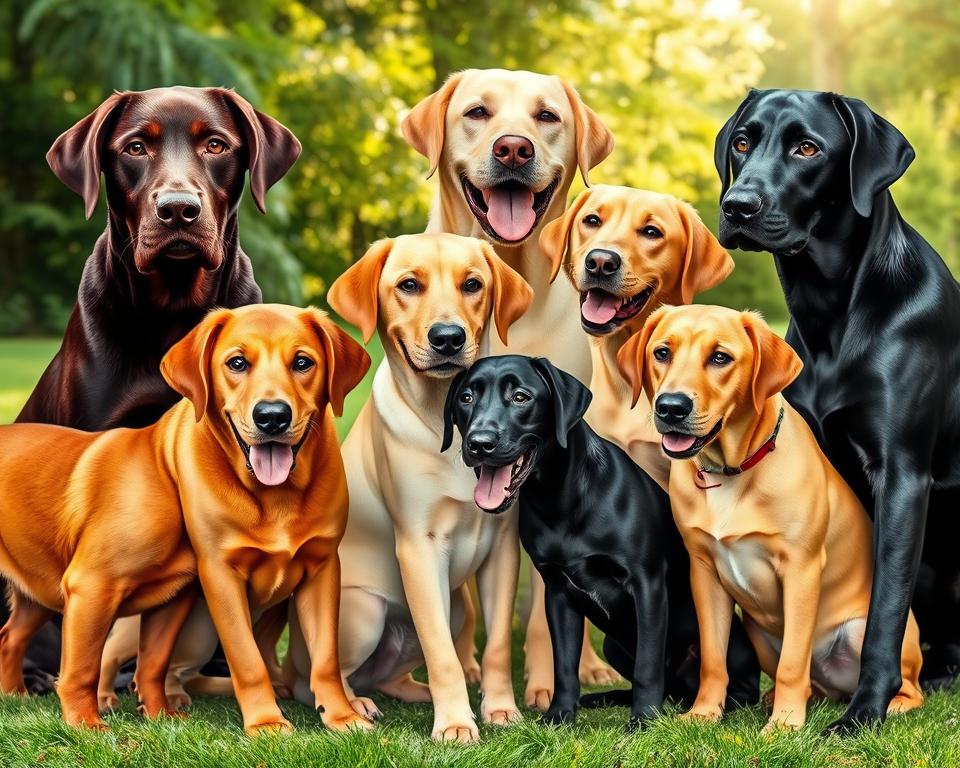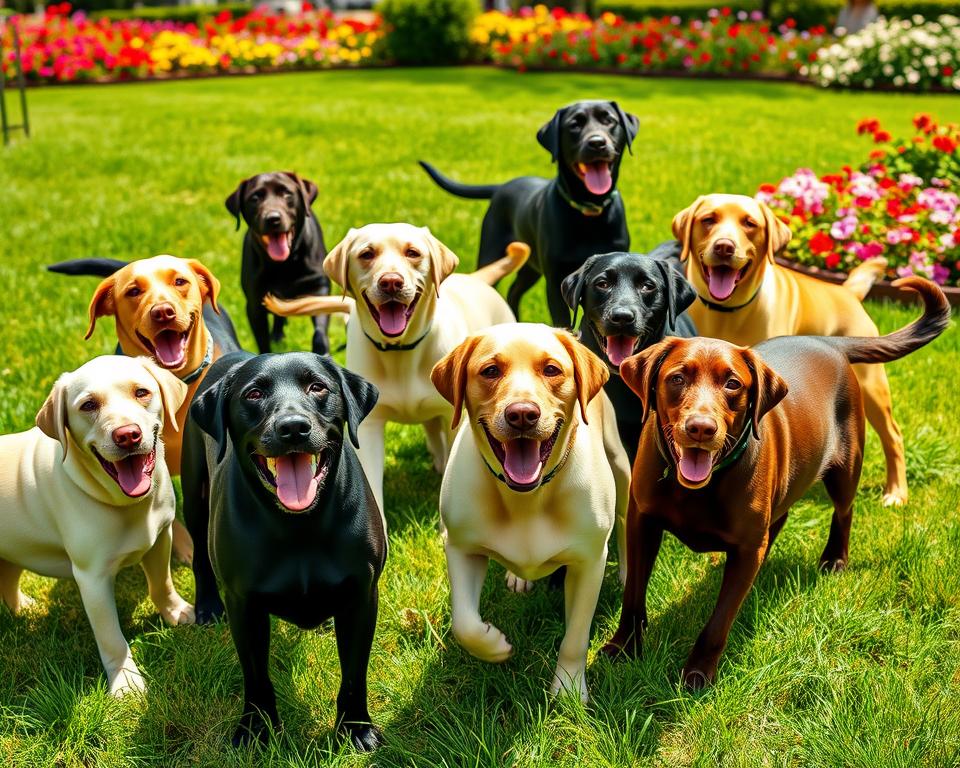Most Popular Labrador Retriever Colors: A Guide
Labrador Retrievers are one of the most beloved dog breeds worldwide, and their diverse range of coat colors is a source of fascination for many pet owners. From the classic black to the rich chocolate and the vibrant yellow, each Labrador color has its own unique traits and characteristics. Understanding these color variations can help us make an informed decision when choosing the best Labrador for our families and lifestyles.
In this comprehensive guide, we’ll explore the most popular Labrador Retriever colors, delving into their history, characteristics, and the factors that contribute to their growing popularity. Whether you’re a seasoned Labrador enthusiast or a first-time dog owner, this guide will provide you with the insights to select the perfect Labrador Retriever that aligns with your preferences and needs.
Understanding Traditional Labrador Coat Colors
As the most popular breed of dog in the United States, the Labrador Retriever is renowned for its loyal and friendly nature. But beyond their amiable temperament, Labradors are also celebrated for their diverse coat colors, which have captured the hearts of dog enthusiasts worldwide. Among the traditional colors recognized by the American Kennel Club are the classic black, the warm and vibrant yellow, and the rich and distinctive chocolate.
The Three Main Color Variations
Black Labradors were the original color of the breed, with the yellow and chocolate variations emerging later. Yellow Labradors were first documented in 1902, while chocolate-colored Labradors were recognized in 1892. These three hues have become the hallmark of the Labrador Retriever, each with its own unique charm and appeal.
Color Standards by Kennel Clubs
The American Kennel Club (AKC) maintains strict breed standards for Labrador Retrievers, recognizing these three core colors as the official standard. The UK breed standard, on the other hand, allows for a more flexible range of shades, from light cream to the captivating fox-red. This diversity in color recognition has contributed to the Labrador’s enduring popularity and the ongoing fascination with their unique appearances.
Historical Development of Lab Colors
The evolution of Labrador coat colors has been a fascinating journey. Black Labradors were the original champions, with yellow and chocolate variations emerging later. The establishment of the Yellow Labrador Club in 1924 played a significant role in promoting and popularizing the golden-hued Labs. Over time, the accepted range of shades within each color category has expanded, reflecting the breed’s dynamic and ever-changing landscape.
Black Labradors: The Classic Choice
As the most common color of Labrador retrievers, black Labradors have long been a classic and sought-after choice. Their dark coat has made them a favorite for hunting and field work, with an impressive track record in retriever championships. Between 1909 and 2011, a remarkable 1,790 black Labradors qualified to run in the IGL retriever championship, compared to just 367 yellow Labradors.
The black Labrador’s camouflage abilities make them particularly well-suited for waterfowl hunting, where their dark coat helps them blend seamlessly into the environment. Their visibility also makes them an excellent choice for upland bird hunting, as their dark fur stands out against the terrain. However, this same dark coloration can pose a challenge when it comes to spotting ticks or injuries on their coat.
Despite their popularity, black Labradors are not without their unique considerations. Their black labrador temperament, while generally in line with the breed’s friendly and eager-to-please nature, may require a bit more vigilance from owners to ensure proper socialization and training. With their strong labrador retriever temperament, black Labradors make wonderful companions and working dogs, provided they receive the necessary guidance and care.

Whether you’re drawn to the classic aesthetic of a black Labrador or seeking a versatile hunting or working companion, this timeless color option continues to captivate Labrador enthusiasts around the world.
Yellow Labradors: From Light Cream to Golden
When it comes to Labrador Retrievers, the yellow variety offers a captivating range of shades, from delicate light cream to a vibrant golden hue. These pups must meet strict breed standards, including having dark, heavily-pigmented noses, eyes, and lips to be considered true yellow Labradors. Variations in yellow lab shades, special features, and the intriguing Dudley Lab phenomenon all contribute to the allure of this beloved color within the Labrador family.
Variations in Yellow Lab Shades
Yellow Labradors can showcase a diverse palette, with some sporting a pale, almost white coat, while others boast a deep, rich golden tone. This spectrum of shades is determined by the dog’s unique genetic makeup, which can result in a wide range of yellow hues. Owners and enthusiasts often delight in the subtle differences that make each yellow Lab unique.
Special Features and Markings
In addition to their stunning coats, yellow Labradors can also exhibit distinctive markings and features. Some may have a small white patch on their chest or paws, while others may display intriguing patterns or shading variations throughout their fur. These unique characteristics add to the charm and individuality of each yellow Lab.
The Dudley Lab Phenomenon
One of the more unusual variations within the yellow Labrador family is the Dudley Lab. These pups have a pink nose and light-colored eyes, falling outside the breed’s standard appearance. While Dudley Labs may be visually appealing, they can be more prone to health issues like sunburn and melanoma due to their lack of pigmentation. As a result, they are not recognized by the American Kennel Club (AKC) and may face challenges in the show ring.
Yellow Labradors have long been a popular choice for both service roles and beloved family pets. Their versatility and friendly demeanor make them a sought-after breed, though their lighter coats can sometimes present challenges in certain hunting environments. Nonetheless, these captivating canines continue to capture the hearts of Labrador enthusiasts worldwide.
Chocolate Labradors: Rich and Distinctive
Chocolate Labradors have gained a strong following in both show rings and as beloved family pets. In America, these rich-hued Labs have also established themselves within hunting lines, blending seamlessly into various habitats and proving their versatility across diverse hunting scenarios. While there was once a misconception about their trainability, this notion has been effectively dispelled through proper breeding and training programs.
The chocolate coat color in Labradors is caused by a recessive gene, making them a relatively rare variation within the breed. These genetically unique pups often captivate admirers with their deep, warm brown hues that range from milk chocolate to dark cocoa. However, this genetic rarity has also been linked to potential health concerns, as chocolate Labradors may be more susceptible to certain conditions due to increased inbreeding within the line.
Despite these considerations, chocolate Labradors have cemented their status as beloved companions, particularly for active families. Their high-energy personalities and insatiable appetite for mental and physical stimulation make them well-suited for households that can provide the necessary exercise and enrichment. With proper training and socialization, these distinctive Labs can thrive as loyal, obedient, and affectionate family members.
As the third-most recognized color by the American Kennel Club, chocolate Labradors continue to capture the hearts of dog enthusiasts worldwide. Their rich, chocolatey appearance, combined with their labrador retriever temperament, make them a sought-after choice for those seeking a unique and rewarding canine companion.
Fox Red Labradors: A Rising Trend
Among the diverse array of Labrador retriever coat colors, the fox red Labrador has gained significant attention in recent years. These captivating canines, officially classified as a variation of the yellow Labrador, boast a rich, reddish-orange hue that sets them apart from their paler counterparts.
Origin and Recognition
The fox red Labrador’s distinctive coloration can be traced back to the earliest yellow Labradors, though this hue fell out of favor for a time during the mid-20th century. However, in the past few decades, the fox red Lab has experienced a resurgence in popularity, particularly among hunters and working retriever enthusiasts. These versatile pups are now recognized by major kennel clubs as a recognized color variation within the yellow Labrador breed.
Working Capabilities
Fox red Labradors are prized for their exceptional working abilities, making them a favorite choice among hunters and those seeking a capable, natural-camouflaged retriever. These Labs, often taller and more athletic in appearance than their lighter-colored counterparts, are known for their unwavering drive, intelligence, and keen scenting abilities – all essential traits for excelling in the field. Whether retrieving waterfowl or performing other working tasks, the fox red Labrador is a rising star in the retriever world.
Best Color for Labrador Retriever: Making Your Choice
When it comes to choosing the best color for a Labrador retriever, there’s no one-size-fits-all answer. The ideal color depends on your personal preferences, the dog’s intended use, and the environment in which it will live. However, we believe that the dog’s temperament and health should be the top priorities, rather than solely focusing on its appearance.
Labradors come in a variety of colors, including the traditional black, yellow, and chocolate, as well as the more recent additions of fox red and silver. While certain colors may be more popular or considered “cuter” by some, the dog’s breeding and personality traits are far more important. A Labrador’s temperament and health can vary regardless of its coat color, and it’s crucial to consider these factors when selecting a puppy.
For example, yellow Labradors are often chosen as service or assistance dogs due to their typically good temperaments and listening skills. Chocolate Labradors, on the other hand, are often described as clever and faithful companions. Ultimately, the best color for a Labrador retriever is the one that aligns with your personal preferences and the dog’s intended role, whether as a family pet, a hunting companion, or a working dog.
When selecting a Labrador puppy, we encourage you to look beyond the color and focus on the dog’s overall health, temperament, and working abilities. Reputable breeders will emphasize these qualities over the dog’s appearance, and they can provide valuable guidance in finding the right Labrador for your needs and lifestyle.
Color Genetics in Labrador Retrievers
The vibrant and diverse coat colors of Labrador Retrievers are the result of complex genetic interactions. Understanding the underlying genetics can help us better appreciate the breed’s rich color palette and make informed choices when selecting a Labrador companion.
Dominant and Recessive Genes
The black gene in Labradors is dominant, while the chocolate gene is recessive. This means that a black Labrador will always pass on the dominant black gene to its offspring, while chocolate Labradors must inherit the recessive chocolate gene from both parents to display the distinctive brown hue.
Color Inheritance Patterns
The yellow color in Labradors is controlled by a separate gene pair. To produce a yellow Labrador, the dog must have two recessive yellow alleles (ee). This genetic combination ensures that the puppy will inherit the light, golden coat, regardless of the parents’ other color genes.
Interestingly, there are nine different Labrador genotypes possible, allowing for a wide range of color variations in breeding programs. While two yellow Labs will only produce yellow puppies, two black Labs can potentially produce all three main colors – black, chocolate, and yellow.
Genetic testing has become an invaluable tool for Labrador breeders, helping them predict and manage the color outcomes of their litters. By understanding the complex color genetics, we can appreciate the rich diversity of the labrador retriever coat colors and make informed decisions when choosing the perfect labrador retriever breed standards.

Show Ring vs Field Performance Colors
As passionate Labrador Retriever enthusiasts, we’ve noticed an interesting trend in how color preferences differ between show rings and field performance. In the show circuit, yellow Labradors often take center stage, prized for their approachable and friendly demeanor. However, in the realm of field trials and hunting, black Labradors have traditionally dominated, valued for their camouflage abilities and rugged field performance.
This divide between show-bred and field-bred Labradors has often influenced color preferences more than the color itself. After all, the labrador retriever breed standards and labrador retriever temperament remain consistent regardless of the dog’s hue. In recent years, we’ve seen a shift, with yellow Labradors gaining more ground in championship wins, proving their versatility extends beyond the show ring.
Interestingly, the emerging popularity of fox red Labradors in hunting circles has further blurred the line between show and field preferences. These reddish-colored Labs are prized for their exceptional camouflage, making them an asset in the field. As the Labrador community continues to evolve, we anticipate seeing more diverse color representations across various performance arenas.
Emerging Color Variations and Controversies
In the world of Labrador retrievers, the traditional color palette of black, yellow, and chocolate has long been the standard. However, in recent years, we’ve witnessed the emergence of non-traditional color variations, sparking both excitement and controversy within the breeding community.
The silver Labrador, a result of the dilute gene, has become a rising trend. These muted shades, ranging from charcoal gray to pale platinum, have captivated the hearts of many owners. But the legitimacy of the silver Lab has been a subject of fierce debate. Some breeders argue that these colors are indicative of mixed breeding, while others contend that they are natural variations that should be recognized.
Adding to the controversy are the champagne and isabella Labradors, which also trace their origins to the dilute gene. These soft, creamy hues have gained popularity, yet their acceptance remains a point of contention among Labrador retriever enthusiasts. The American Kennel Club (AKC) and other major kennel clubs have not recognized these emerging colors, further fueling the debate.
The implications of these non-traditional colors extend beyond aesthetics. Concerns have been raised about potential health issues and the impact on the breed’s overall genetic diversity. As the discussion continues, responsible breeders strive to balance the appreciation for unique color variations with the preservation of the Labrador retriever’s labrador retriever breed standards.
Navigating the nuances of labrador retriever coat colors has become increasingly complex, with passionate arguments on both sides. Whether these emerging hues will be embraced or rejected by the broader Labrador community remains to be seen, but one thing is certain: the breed’s rich history and diversity continue to captivate dog enthusiasts worldwide.
Health Considerations Related to Coat Colors
As we delve into the fascinating world of Labrador retrievers and their captivating array of coat colors, it’s essential to understand the potential health implications associated with each hue. While Labradors are generally robust and healthy dogs, certain color variations may be linked to specific health concerns that responsible owners and breeders must consider.
Pigmentation and Sun Sensitivity
Labradors with lighter pigmentation, such as the sought-after Dudley Labs, may be more susceptible to sunburn and skin cancer. Their fair skin and coat provide less protection from the sun’s harmful UV rays, making them vulnerable to these conditions. Diligent sun protection and regular veterinary check-ups are crucial for these light-colored Labradors to maintain their health and wellbeing.
Color-Specific Health Issues
Interestingly, some studies suggest that chocolate Labrador retrievers may have a slightly shorter lifespan and a higher incidence of certain health problems when compared to their black and yellow counterparts. Conditions like ear infections, pyotraumatic dermatitis, and other skin-related issues appear to be more prevalent in chocolate Labs. However, it’s essential to note that this is an area of ongoing debate, and individual factors play a significant role in a Labrador’s overall health.
Regardless of a Labrador’s coat color, regular veterinary check-ups, proper nutrition, and adequate exercise are crucial for maintaining their optimal health. By understanding the potential health considerations associated with different coat colors, we can make informed decisions and provide our beloved Labradors with the care they deserve.



